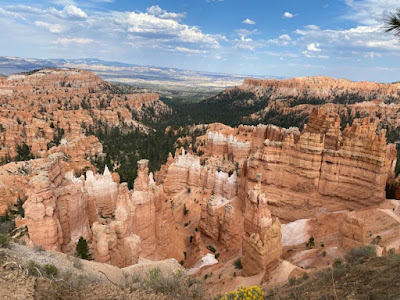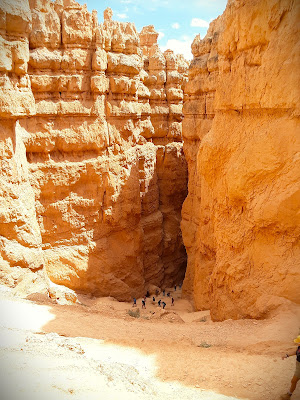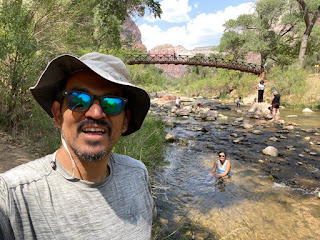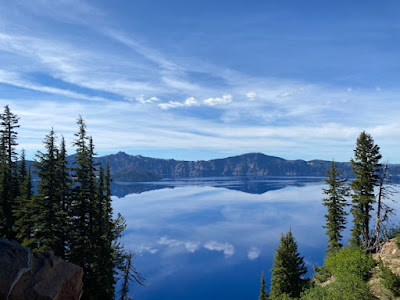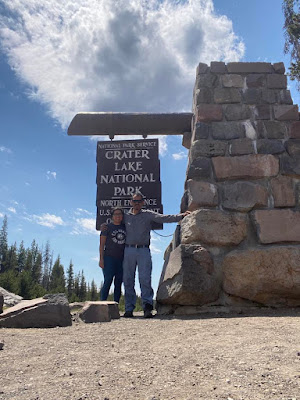Death Valley National Park: Road Trips from Los Angeles
By Armando Ortiz
Introduction to Death Valley:
Death Valley National Park is one of the most unique places to visit in the U.S. It is a place where what you think is impossible is possible. Here you discover tiny little animals that continue to survive in the harshest of environments. You also see with your own eyes things that have probably taken decades if not centuries to occur and wonder if it was manmade. It's a place where the salt lands make you rethink the idea of snow capped mountains. It falls within a region that was inhabited by the Shoshone people for many centuries, and who had villages in the area. The Shoshone had adapted to life in the extreme desert. I first heard of this mysterious place from someone who asked me if I’d ever been to the Racetrack Playa. I’d never heard of the place, but after a brief explanation I made the connection with pictures I’d seen growing up. The following is a short description of one of the many itineraries that one may make if you plan to visit Death Valley at some point in your life. After you are done with your visit you will be plotting out your next adventure to the park.
Route taken and what we saw:
Start your day early and drive to Death Valley National Park. Make sure you have all the necessary camping gear, food, and plenty of water. Before embarking on this journey I had previously bought a portable air compressor, a tool bag, patch kit, a shovel, recovery strap, and plenty of water. These things would be safely packed inside the truck. Being that we were going into the desert we packed sunscreen, long sleeve shirts, pants and a good hat. We took several gallons of water in case anything happened.
From Los Angeles you take Interstate 5 North to California Highway 14. On this highway the drive might be between two hours to an hour and a half, which you drive to 395 north to Death Valley. The route that we took was slightly different and off the beaten path. I drove north on the 14 for about an hour till we reached Cantil. Once there, we exited and took the road to the right which is Redrock Randsburg Road. This road then becomes Garlock Road and briefly joins the U.S. Route 395 from which you will make a right onto Searles Station CTF. This section of the drive is about an hour long.You stay on this road till you join Trona Road and make a right. This will then take you to State Route 178. Drive on this road for about an hour to an hour and a half and finally you’ll reach 190. On this highway make a right onto it and drive up the ridge and over into Death Valley for about another hour. Since this area is sparsely populated and hardly any buildings, things might seem closer than they really are and mountains that don’t seem to have roads do. Once on the eastern facing side of the range you can take in the vastness of the valley. Let your car coast down, gently applying the brakes when needed.
It will take a few hours of driving to get to Death Valley National Park, but the views there, especially in the Spring are great. You can stop at Stovepipe Wells and have lunch there. We stopped there for a quick bite, ordered burgers. After finishing off our meal we got back on the highway, and headed east. Soon we reached Scotty’s Castle Road, where you will turn left and drive for about thirty minutes. Arrive at the Mesquite Spring Campground, which is a great base for exploring Death Valley. We set up our campsite and resumed our journey. Destination for the day- Racetrack Playa.
As you move along you get the feeling of driving both through the mountains of Mars and the backdrop of a Star Wars set. All you hear is rubber rubbing on loose rocks, and the vehicle rocking from left to right. After about an hour of driving, you’ll reach Teakettle Junction. This intersection indicates that you are a few miles away from your destination, which translates into 30 minutes more of driving. At this junction people place their tea kettles with messages inside them for others to read. So, get out, look around, and read some of the messages and get a good laugh. As you approach your destination you'll begin to see it at a distance, a seemingly quiet valley surrounded by rocky hills and mountains. At a distance you might notice a plume of dust might be seen at a distance of a vehicle either coming or going.
Once you arrive, take your time to explore the unique “sailing stones” or “moving rocks” that mysteriously move across the dry lake bed. Set aside an hour or two to hike around the playa and to climb the rocks on the island. There you can enjoy the breathtaking views and take plenty of pictures at Racetrack Playa. Marvel at the vastness of the desert landscape and the geological wonders surrounding you.
Death Valley activities and length of time recommendations:
The next day we woke up early, packed up and drove to Ubehebe Crater, a volcanic crater located in the northern part of Death Valley. It’s only a few miles from Mesquite Springs Campground. Take a hike around the crater rim or hike down to the bottom of the crater and explore the area. The hike down is easy, but a bit steep. Once at the bottom explore the old muddy caldera, and take a good gulp of water because the hike up can be tough. According to the information there the crater was created after an accumulation of steam caused a giant eruption making the crater. As you return to your starting point the hike will be tough at times because the footing can be loose. You also have the option of hiking around the crater, but we decided to leave that for another time.
After visiting Badwater Basin, we continued our drive along the scenic road north to Artist’s Palette, which is about a 10 mile drive along the baseline of the mountains. This area showcases a stunning array of colorful rock formations due to various minerals present in the soil. Take some short hikes and take some pictures or enjoy the drive through this geological wonderland. Admire the layers of colors that are visible, yellows next to pinks, and copper greens next to blue layers of sage.
As the day came to a close, we drove north to rejoin the 190 once again and there made a left. Here you may fill up on gas or get a quick bite at the local diner. Drive over the mountain ranges and into a valley that if you continue on the highway will take to Olancha, where it connects to the 395 and from there head south. You can also make a left onto the Panamint Valley Road and retrace your drive back to Los Angeles.
Ending and review:
Visiting Death Valley once seems like it isn’t enough. It will get you thinking about the things that you might want to do the next time you go. I’d return again during Spring, and would take a telescope to do some stargazing. I’d also go on one of the longer hikes and explore some of the canyons in the area. There are many ways to enter the park, so I’d consider approaching it from a different direction. In the end, Death Valley makes you appreciate desert environments even more. It makes you realize how big our country is and the endless possibilities that its national parks offer. Visiting this place also leaves you wondering of the many other mysteries and untold stories that this land keeps hidden in its canyons and valleys.









